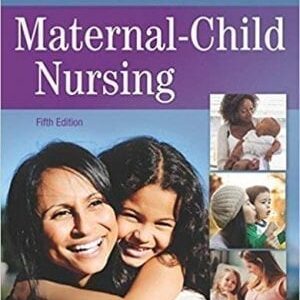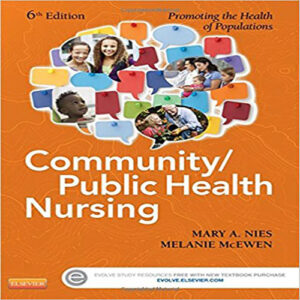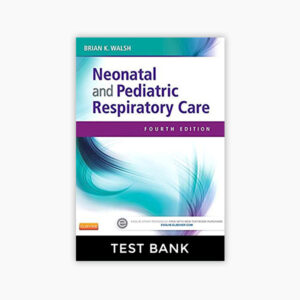Test Bank for Nursing Interventions and Clinical Skills 7th Edition By Potter
Chapter 01: Using Evidence in Nursing Practice
MULTIPLE CHOICE
1. A nursing educator is explaining how the best clinical practices are determined. Which
statement best explains the purpose of evidence-based practice?
a. It ensures that all patients receive holistic care.
b. It provides a definite reason for providing care in a specific manner.
c. It prevents errors when care is being delivered.
d. It guarantees that care delivered is based on research.
ANS: B
Evidence-based practice is the use of the current best evidence in making patient care
decisions. It applies to all types of health care professionals. Currently there is no method that
can ensure that all patients receive holistic care, that all errors can be prevented, or that a
guarantee exists that care given is based on research.
DIF: Cognitive Level: Understanding OBJ: NCLEX: Safe and Effective Care Environment
TOP: Nursing Process: Implementation
2. Which question is a problem-focused trigger for initiating the evidence-based practice method
in nursing care?
a. What is known about reduction of urinary tract infections in the older adult with
diabetes?
b. How can chronic pain best be described when the patient is nonverbal?
c. How long can an IV catheter remain in place in a patient with obesity?
d. What measures can the nurse take to reduce the rising incidence of urinary tract
infections on the older adult care unit?
ANS: D
Evidence-based practice (EBP) questions tend to arise from two sources: recurrent problems
or new knowledge. In the correct option, the increase in urinary tract infections indicates a
trend or recurring problem in a specific group of patients. The other questions are general
information questions, not based on what is happening in a specific area or to a group of
specific patients in an area or relating to an observed trend.
DIF: Cognitive Level: Applying OBJ: NCLEX: Safe and Effective Care Environment
TOP: Nursing Process: Implementation
3. What does the “I” indicate in a “PICO” question?
a. Intervention of interest
b. Incorporation of concepts
c. Implementation by nursing
d. Interest of personnel
ANS: A
The “I” stands for the intervention of interest, meaning what the nurse hopes to use in practice
and believes is worthwhile or valuable. This could be a treatment for a specific type of wound
or an approach on how to teach food preparation for a patient with impaired sight.
DIF: Cognitive Level: Remembering OBJ: NCLEX: Safe and Effective Care Environment
TOP: Nursing Process: Implementation
4. Who will the clinical research nurse contact to search relevant databases in preparation for an
upcoming study?
a. The physician whose patients may be involved in the study
b. The medical librarian
c. The nurse manager of the unit where the study will be conducted
d. The director of nursing of the facility
ANS: B
The medical librarian is most knowledgeable regarding databases relevant to a study. The
other individuals do not have the knowledge regarding relevant databases.
DIF: Cognitive Level: Understanding OBJ: NCLEX: Safe and Effective Care Environment
TOP: Nursing Process: Implementation
5. Which database contains summaries of clinical guidelines and their development?
a. MEDLINE
b. CINAHL
c. Cochrane Database of Systematic Reviews
d. The National Guideline Clearinghouse
ANS: D
The National Guideline Clearinghouse is a database supported by the Agency for Healthcare
Research and Quality. It contains summaries of clinical guidelines for practice. MEDLINE is
a database for studies in medicine, nursing, dentistry, psychiatry, veterinary medicine, and
allied health. CINAHL (Cumulative Index of Nursing and Allied Health Literature) includes
studies in nursing, allied health, and biomedicine. The Cochrane Database Full text of
regularly updated systematic reviews prepared by the Cochrane Collaboration includes
completed reviews and protocols.
DIF: Cognitive Level: Remembering OBJ: NCLEX: Safe and Effective Care Environment
TOP: Nursing Process: Implementation
6. Which does the nurse researcher identify as the strongest type of research?
a. Randomized controlled trials
b. A qualitative study
c. A descriptive study
d. A case-controlled study
ANS: A
Individual randomized controlled trials are close to the top of the research pyramid. Only
systematic reviews and meta-analyses are higher. This type of study tests an intervention
against the usual standard of care. The other types of studies are useful but do not give the
same type of information as a randomized controlled trial provides.
DIF: Cognitive Level: Remembering OBJ: NCLEX: Safe and Effective Care Environment
TOP: Nursing Process: Assessment
7. What is the nurse attempting to determine when critiquing the evidence related to a PICOT
question?
a. The ethical conduct of the research the nurse read
b. The strength of the evidence found in the literature
c. If there are any experts in the clinical question needing to be researched
d. If the study demonstrates cost-effectiveness if a change in practice occurs
ANS: B
Once a literature search is complete and data are gathered about the question, it is time to
critique the evidence. Critiquing the evidence involves a systematic approach to looking at the
strength of the work reviewed and its relevance. The other questions are not applicable to
critiquing the evidence.
DIF: Cognitive Level: Understanding OBJ: NCLEX: Safe and Effective Care Environment
TOP: Nursing Process: Implementation
8. A nurse finds a cohort study comparing one group taking hormone treatment with another
group not taking hormone treatment to determine the incidence of changes in bone density of
the lower spine. What can the nurse imply from this study?
a. Low level of strength makes the study limited in value.
b. Moderate level of strength makes the study probably useful.
c. Opinions of the individuals in the cohort are not researched.
d. This could be the basis for a Quality Improvement project.
ANS: B




